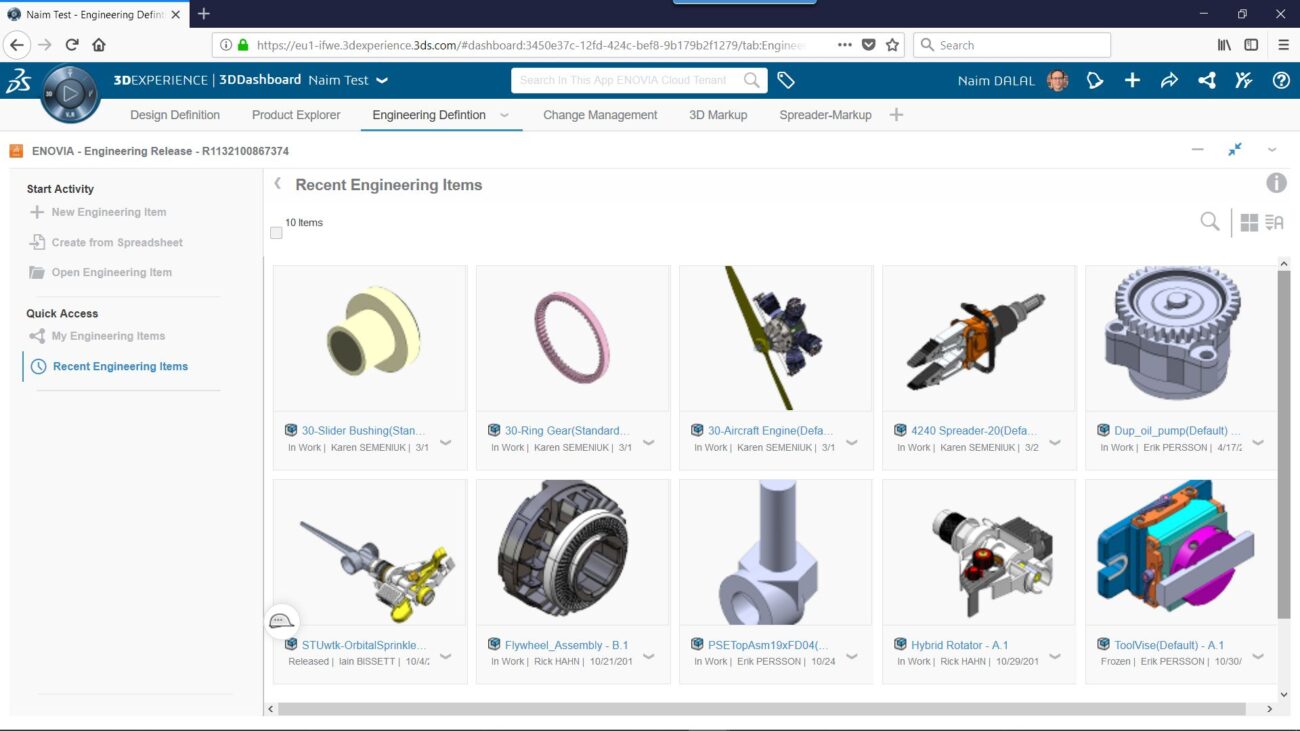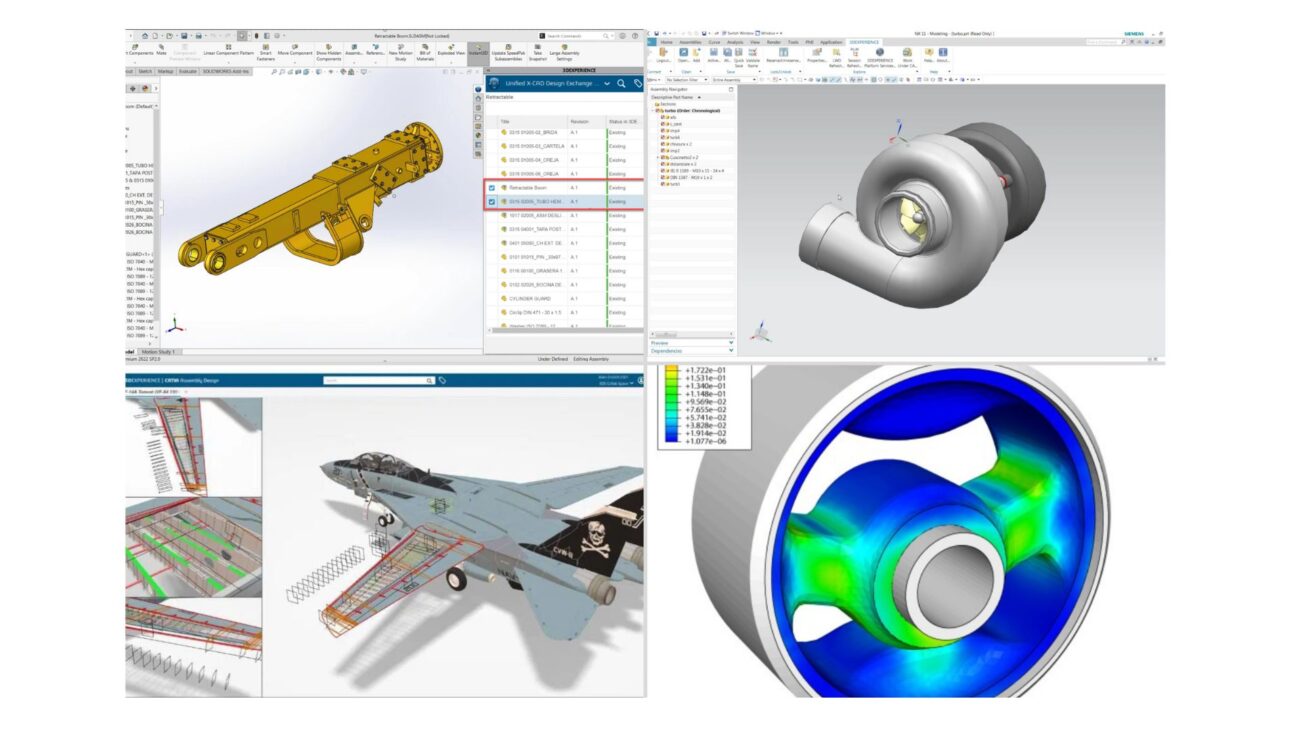Optimization of Direct Air Capture System with Computational Fluid Dynamics [CFD]
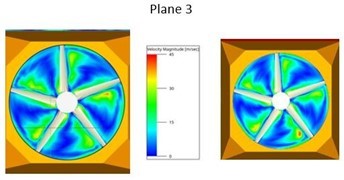
All major companies are conscious of their carbon footprints and are actively seeking ways to reduce CO2 emissions. In addition to these efforts, they are also investing in technologies such as Direct Air Capture and Carbon Capture and Utilization to remove CO2 from the atmosphere. This blog explores how Computational Fluid Dynamics (CFD) can play a crucial role in improving the efficiency of these systems.
Direct Air Capture (DAC)
DAC is a technology to remove Carbon Dioxide from the atmosphere. Direct air capture operates by drawing in atmospheric air and subsequently employing filtration techniques to extract accumulated CO2 that has persisted in the atmosphere over time.
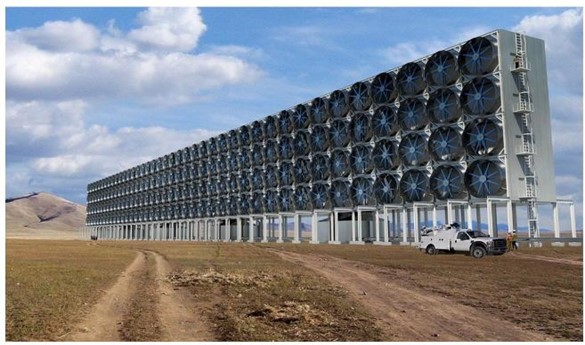
Direct Air Capture Technology to extract CO2 directly from the atmosphere
For an effective capturing of the CO2 from an atmosphere, maximum amount of air needs to be drawn into the system where the process of capturing CO2 takes place by various methods. It is a great challenge for engineers to design the system to draw maximum amount of air for a given rated fan. The flowrate across a fan in a DAC system can significantly impact its efficiency. The fan’s role in a DAC system is to draw atmospheric air into the capture unit, where CO2 is removed. The flowrate determines how much air the DAC system can process in a given amount of time. Higher flowrates allow the system to come into contact with more atmospheric air, which can increase the amount of CO2 captured. However, excessively high flowrates can lead to reduced capture efficiency as higher flowrates may reduce contact time between the air and the CO2 capture materials. the flowrate across the fan in a Direct Air Capture system is a critical parameter that can significantly affect the system’s efficiency. Finding the right balance between flowrate, capture efficiency, energy consumption, and system design is essential for the successful operation of DAC technology. It requires careful consideration and optimization to achieve balanced flow rate with enhanced efficiency in capturing CO2 while minimizing operational costs and energy consumption.
Vias3D modelled and performed CFD simulation to improve the flow rate by making design modifications in shroud for the same fan geometry. The simulation is performed in PowerFLOW simulation software based on Lattice Boltzmann Method (LBM). LBM is a meshless approach and based on fluid particle interactions instead of assuming fluid as continuum. So, the simulation domain is discretised into Lattice grid and the fluid properties are calculated at lattice points based on particle collisions and interactions.
The air entering the DAC system is assumed to be an ideal gas with the pressure inlet condition since the flow is induced because of the suction created by the fan where pressure difference occurs between inlet and fan. The carbon capturing material is modelled as porous medium with the pressure drop across it and the fan is making 400 revolutions per minute. The base model of the shroud is considered in rectangular shape of 24 ft x 20 ft. The model is able to generate 16.4 cfm of flow rate across the fan. The new model is considered with the design modifications in the shroud and modelled as square shape of 20 ft x 20 ft. With the same conditions as base model, new model is identified to generate 24.1 cfm of flow rate across the fan. Modification in the shroud design is observed to improve the flow rate across the fan by ̴47%.
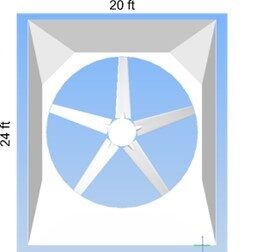
a. Base Model with Rectangular Fan shroud
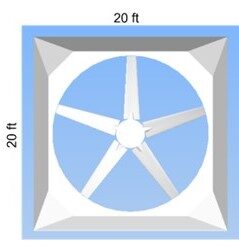
b. New Model with Square Fan shroud
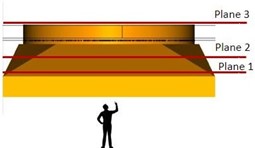
The following images compare the velocity magnitude of air between the two models from different viewpoints.
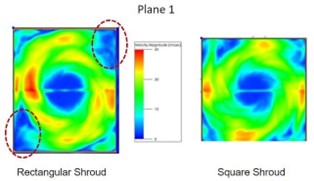
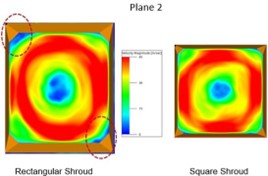

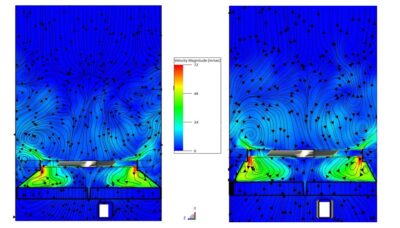
Computational Fluid Dynamics (CFD) plays a significant role in the development and optimization of DAC systems. CFD is a computational tool used to simulate and analyse the behaviour of fluids, including air, and it can be extremely helpful in various aspects of DAC design and operation. CFD allows engineers and researchers to create detailed virtual models of DAC systems, including the capture units and associated components. By simulating the flow of air through these systems, CFD can help optimize their design for maximum CO2 capture efficiency. It allows for the fine-tuning of parameters such as flow rates, temperatures, and sorbent materials to achieve the best performance. This aids in understanding and addressing air quality issues, guiding environmental policies, and ultimately contributing to a healthier and more sustainable future.
About VIAS3D
VIAS3D engineering and simulation team combines decades of analytical and design experience. They have successfully helped to design various products from many industries for strength, stability, rigidity, and fatigue endurance. Our design and analysis capabilities are accomplished through advanced engineering modelling techniques such as Finite Element Analysis (FEA), Computational Fluid Dynamics (CFD), Electromagnetics (EMAG) and other tools. Using these advanced tools, we can capture complex design features and nonlinearities arising from materials, geometry, and surface interactions to simulate designs and predict their response before they are brought in production.
Please email us at achakraborty@vias3D.com or drop a message at: https://www.linkedin.com/in/arinc16/ and to know more about our CFD capabilities or consulting needs, please email mlakshmiraju@vias3D.com or drop a message to https://www.linkedin.com/in/murthylakshmiraju/
Contributors:
Murthy Lakshmiraju, PhD, Technical Director at Vias3D
Dr. Lakshmiraju has over 15 years of advanced use and experience in CFD to solve real life engineering problems for numerous industries, including appliances, energy, oil and gas, marine and chemical processing. He graduated with a Masters and PhD in Mechanical Engineering from Tennessee Tech, USA. He has experience in different flow physics, including advanced turbulence modelling, multiphase flow, heat transfer, Dynamic Fluid Body Interaction (DFBI), Fluid Structure Interaction (FSI), Chimera mesh, Conjugate Heat Transfer (CHT) and reacting flows with combustion and emission modelling.
Sai Sandeep Pydisetti, M. Tech., CFD Engineer at VIAS3D
Mr. Pydisetti has an industrial experience in CFD simulation, technical support, and consulting. He has worked on a wide range of applications, including aerodynamics, multiphase analysis in offshore environments, and thermal analysis etc. His professional interest involves CFD simulation and analysis of Fluid dynamics and Heat Transfer applications.



